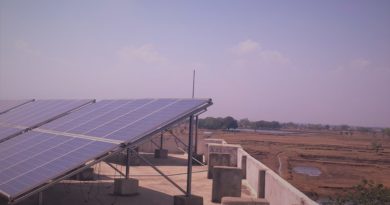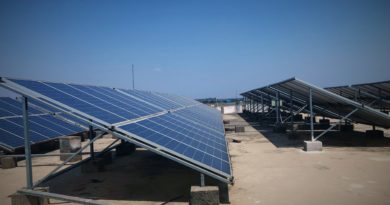Solar Rooftop Projects – A glance on the Key Aspects
Solar Rooftop PV Power System is a mini power plant which converts energy in the radiation of sun into electricity. Most of the parts of India receive average radiation of 4.7 kWh/sq.m per day with approximately 300-325 sunny days in a year. Anyone (industrial, commercial, educational & residential) can have solar rooftop power; the capacity of the power plant will depend on the shadow free roof space available, power requirement of the building or the connected demand of the building and the capacity of the owner to invest into the project.
The components of the solar rooftop projects are: Solar Panel, Charge Controller, Battery, Interactive Inverter, main switch box, consumer load, power meter and utility service. The roof must be able to accommodate all the required plant components as per the design specification of the project. The studying of the roof configuration such as location, height, slope orientation, etc. is one of the key aspects of any solar rooftop project. Structural evaluation should be carried out to assess the strength of the roof and the roof supporting structure to sustain an additional load (30-50 kgs/sq.m ) of the solar system. Generally, in India sloped roofs are designed for live loads as per IS-875. This live load is more when the load gets added because of the solar systems. If required, repairs/ replacements and strengthening measures should be adopted.
The roof types can be: –
- Sloping metal roof – standing seam, corrugated, or trapezoidal sheet. The roof and roof-supporting structure should be inspected to check for any sag and other abnormalities.
- Flat concrete roof- a flat or even low-slope concrete terrace roof will normally have the strength to bear the additional weight of the panels and supporting structures.
The plants are classified based on the operation in the following 03 types: –
- Grid connected solar rooftop PV system- as the name suggests, the plant is connected to the grid through net or gross metering without any battery backup.
- Hybrid Plant- It is similar to a grid connected system but with a battery backup. The consumer gets power from the battery in case of power failure. This is not possible in a normal grid connected power plant.
- Off-grid power plant- It is without connected to the grid. The battery backup is connected, and it adds to the project cost. This is considered for the areas where grid is not available.
There is a limit of individual solar capacity in each state. Such as a consumer in Delhi can match his solar capacity with his sanctioned load whereas in Madhya Pradesh, the consumer can have only 50% of the sanctioned load as Solar project capacity. The information of a particular state can be obtained from the corresponding state nodal agency during the project execution.
Indian DISCOMs offer 02 types of metering for Solar Rooftop PV Projects: –
- Net Metering – the meter operates in both directions. The consumer uses the solar energy first and the balance if any is fed to the grid. The consumer can also import from the grid as per the requirement. At the end of the billing period, the net power is calculated whether the net energy is positive (import power is more than export power) or negative.
- Gross Metering – in this case 02(two) separate meters are installed; 01 (one) for export measurement and another for import energy measurement
References:



